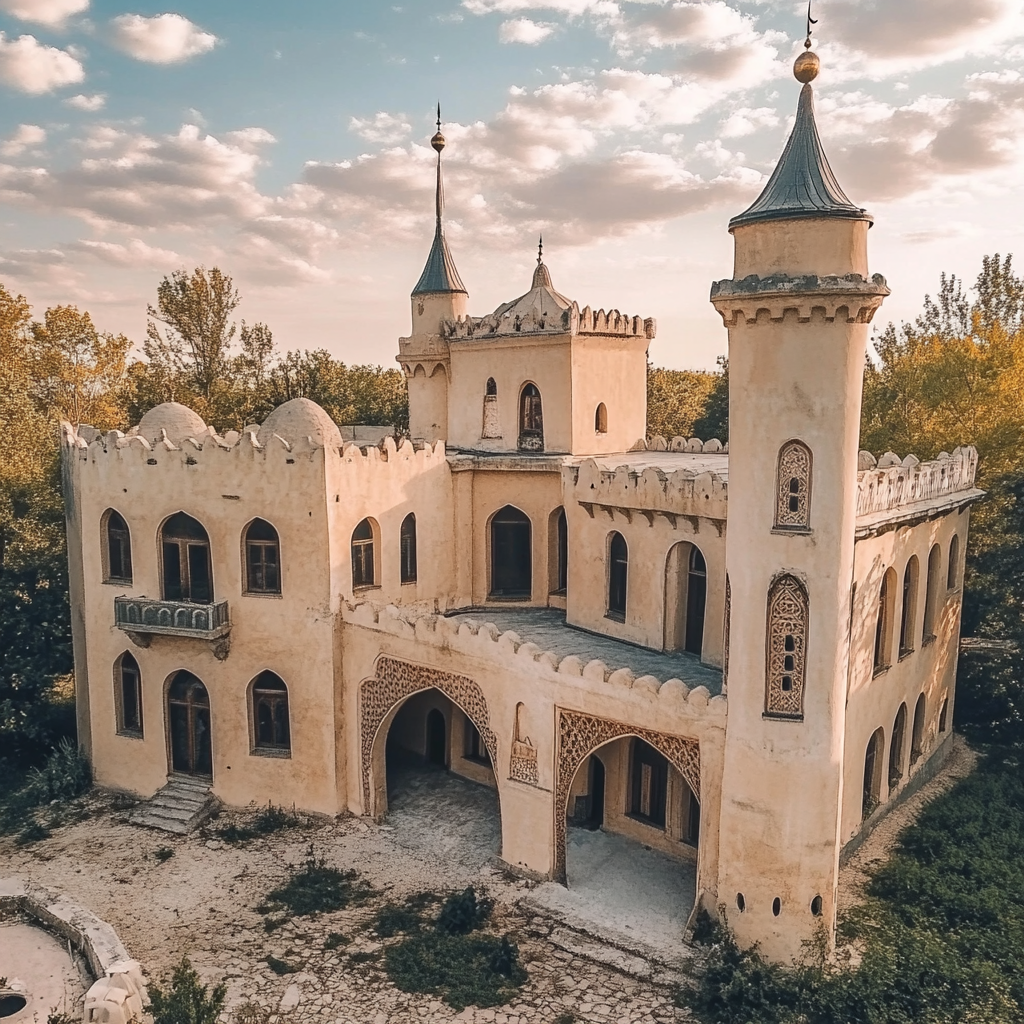The history of the Ottoman Empire is more than just rich culture, spectacular military victories and magnificent architecture. These are also unique perfumery traditions that have been carefully passed down from generation to generation. Fragrances of the Ottoman Empire were an important part of everyday life, an integral part of the imperial court and a status symbol. They are created using unique natural ingredients, many of which are only available in this part of the world. The combination of natural resources and perfumery craftsmanship made Ottoman perfumes the personification of luxury and elegance.
History of perfumery in the Ottoman Empire
Perfumery in the Ottoman Empire appeared in the early periods of the existence of the state and was closely connected with the culture of the Middle East, Persia and Byzantium. Perfumes were used not only for aesthetic purposes, but also for religious rituals, emphasizing status and creating a certain image. Oriental scents have always had strong connotations of well-being, religious purity and magic.
Historians believe that the Ottomans skillfully combined the traditions of their predecessors with new discoveries in the field of perfumery, making fragrances an integral part of court etiquette. The use of scents was a symbol of wealth and influence. For centuries, perfumery occupied a central place in the lives of emperors and nobles, who sought to surprise their guests and subjects with the exquisite scents that hovered in their palaces and garden pavilions.
Traditional ingredients and the secrets of their creation
An important part of Ottoman perfumery are the unique components that give the scents their characteristic depth and luxury. Here are the key ingredients that were used in traditional perfumes:
- Damask rose – one of the most recognizable aromas of the Ottoman Empire, which was used both in pure form and in combination with other components.
- Musk – a sensual and rich component that was used to create deep, long-lasting aromas.
- Saffron – a spicy and bright note that gave the compositions an oriental warmth.
- Ambergris – gives the perfume softness and durability, was a symbol of luxury and rarity.
- Sandalwood – a tree with a warm and calm aroma, often used in religious and meditative practices.
These components were collected in certain seasons and underwent a complex processing process to ensure that their aroma reached maximum depth and durability. Perfumers knew how to preserve natural purity of components and in doing so, create complex and multi-layered compositions that could last for many hours.
The influence of Ottoman perfumes on world perfumery
Ottoman Empire was an important bridge between East and West. It was through its lands that the main trade routes passed, along which not only goods were transferred, but also cultural traditions were spread. Oriental fragrances brought from the Ottoman Empire inspired European perfumers and changed approaches to creating fragrances.
European monarchs, including French kings, fell in love with oriental perfumes that amazed with their depth and exoticism. Ottoman scents influenced the formation of the “oriental” direction in European perfumery, which included the use of components such as oud, amber and various spicy spices. These perfumes helped create an atmosphere of mystery, intrigue and sensuality that became fashionable in European court circles.
Today we can see the influence of Ottoman perfumery in modern oriental fragrances that continue to use traditional ingredients and maintain a unique style. Ottoman perfume remains a symbol of wealth, sophistication and impeccable taste.
The role of fragrances in the life of the Ottoman nobility and the imperial court
Throughout the history of the Ottoman Empire, fragrances played a key role in the lives of the nobility and the imperial family. For the sultans and their entourage, perfume was not just an aesthetic element, but a symbol of status and power. Of particular importance was the art of creating fragrances, which were intended exclusively for the emperor and his inner circle.
In the Sultan’s palaces there were special chambers where the most expensive and rare perfumes were kept. The scents were also used in numerous palace ceremonies, creating an atmosphere of grandeur and luxury. Ottoman nobles often gave incense and perfume as symbols of respect and recognition of status, and precisely through aromas honor and gratitude could be expressed. Each scent was a symbol of a certain trait: power, beauty, wisdom or strength.
Ottoman empresses and concubines also attached great importance to perfume and used it to take care of themselves and create an attractive image. Perfumes made for women of the Ottoman nobility often included rose, jasmine and saffron, which emphasized their delicacy and mystery.
Modern flavors of Turkey: heritage and innovation
Modern Turkish perfumers continue to develop the legacy of the Ottoman Empire, combining ancient traditions with modern technologies. Many brands retain key ingredients such as Damask rose and oud, but use new methods of aromatic extraction that allow for greater longevity and richness of the composition.
Turkish perfumery remains relevant due to the fact that the masters know how to find a balance between preserving ancient traditions and introducing innovations. Modern Flavors of Turkey have become more versatile and accessible to an international audience, while maintaining a unique oriental style and elegance. They are in demand both locally and internationally, remaining a symbol of quality, history and craftsmanship.
Ottoman perfumery is the embodiment of a rich history, cultural traditions and art that has been passed down from generation to generation. The secrets and legends absorbed into each bottle continue to inspire modern masters and perfume lovers around the world. These scents are a true bridge between past and present., combining the strength of ancient traditions and modern innovations.
Turkish scents have the ability to transport us to the world of the Ottoman Empire, where each scent symbolized a special energy, power or mystery. Thanks to unique ingredients and special creation technologies, Ottoman perfumes continue to attract the attention of connoisseurs of luxury and sophistication.
Modern Turkish perfumers preserve this magic, giving it a new look that matches the rhythm of the modern world, but does not lose its depth and richness. Oriental fragrances remain relevant thanks to their unique combination of sensuality, strength and mystery, which attracts both men and women around the world. With every breath of these aromas, we feel like we are becoming part of a great story., which begins in ancient times and continues in the present.
The main components of Ottoman perfumes were ingredients such as damask rose, musk, saffron, sandalwood And ambergris. These natural substances were used to create layered and long-lasting scents that epitomized the wealth and sophistication of the Ottoman court. Each component had its own symbolic meaning and was part of the cultural and religious practices of the time.
The traditions of Ottoman perfumery continue to inspire modern perfumers, especially in the field of use oriental ingredients. Components such as ud And ambergris, remain important elements in the creation of modern fragrances, which often imitate ancient oriental compositions. These scents remain popular due to their depth And exoticism, maintaining the atmosphere of luxury and mystery that attracted attention back in the days of the Ottoman Empire

